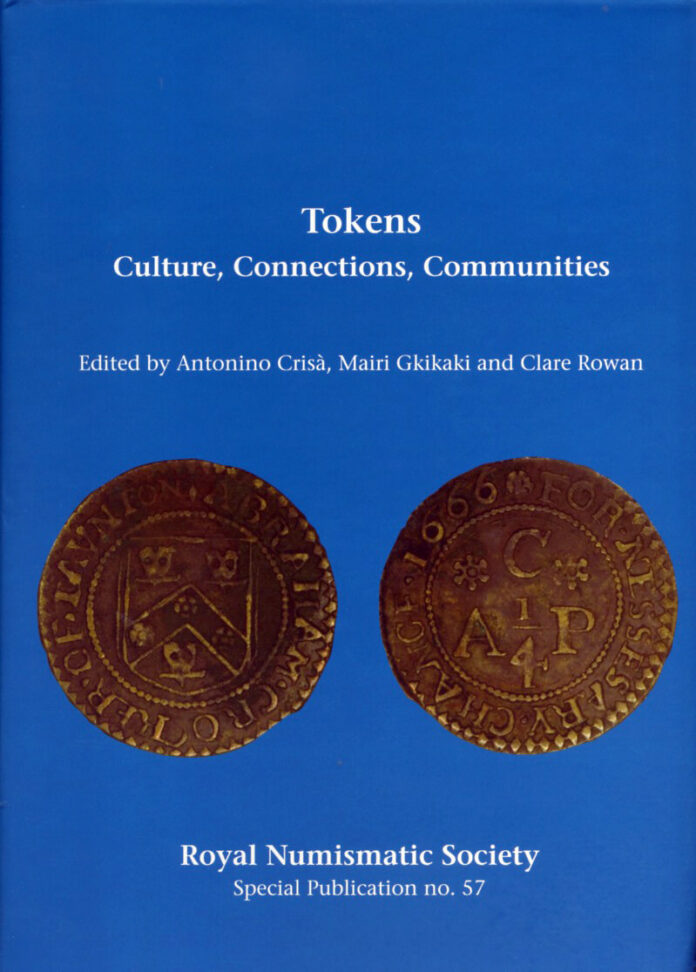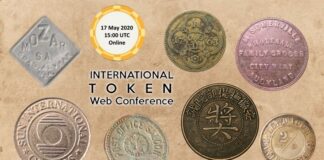
Tokens – even though they aren’t coins, they somehow belong to the field of numismatics. Although they cannot be classified as legal tender, tokens have a monetary function; they ensure the receipt of a benefit, an object and cause the payment process or the verification of eligibility for a benefit to take place at another time within the course of a transaction to guarantee a more effective handling of a certain process.
The Purpose of Tokens
Wow, that was quite a theoretical introduction! So let’s get practical: Let’s assume that the emperor is distributing grain and oil among the needy Roman citizens. It makes sense that their legal status and neediness isn’t checked directly in front of the plattform, where everyone is waiting for their grain, but at some point in the run-up to the event. Those who pass the verification are given a token – in Latin: tessera. And with this tessera, they can go collect the grain.
Or the case of beer tokens – and please don’t think of today’s pubs with an abundance of different beers and dishes – we’re talking about simple ale houses with one kind of beer and food that has to be paid extra: A waitress made her life easier – by the way, until the middle of the 20th century – by receiving a certain amount of beer tokens from the landlady before her shift started, of which she gave back one for each beer that she got for the guests at the bar. At the end of her day, she subtracted the sum of missing tokens from what’s in her wallet in order to calculate her tip.
From Neolithic Times to Today?
And these are just two of the numerous ways in which tokens are used. However, the conference proceedings with the presentations that were held in the context of the conference “Tokens: Culture, Connections, Communities” that took place in Warwick in June 2017 doesn’t focus on the function of tokens. The essays range from Neolithic objects that are regarded as tokens to the end of the 18th century. The connection to modern times is provided by an article by Bill Maurer, who compares Athenian tokens and questions of blockchain technology while he speculates on how future archaeologists will interpret the physical remnants related to blockchain technology.
The conference proceedings clearly emphasise antiquity and archaeology. Athenian clay tokens and their Roman equivalents made of lead are dealt with in nine (of 16) articles. And yes, there is obviously an extensive article on the group of spintriae and related products, in which Alexa Küter comes to the reasonable conclusion that the thesis that these pieces were gaming tokens is the most probable. There is one article about the Middle Ages and three about early modern times, all four of them are dealing with Great Britain. In addition, there is an introduction and the already mentioned contribution referring to modern blockchain technology. There’s nothing about the 19th and 20th century and no contribution on the rest of the world.
This wouldn’t be a problem if the publishing house did not advertise this volume with a blurb claiming that this is the first scholarly work covering the entire time spectrum from prehistory to modern times. This is not true. The anthology focuses on ancient times with a special emphasis on Athens and Rome including a few UK topics on the side. That’s certainly no surprise considering that the editors come exclusively from the field of ancient studies.
No Modern Era in Numismatics
Thus, this work perfectly reflects how historical periods are currently prioritized by numismatic scholars. The modern period starting from 1800 is more or less non-existent. It’s quite funny that people don’t even realise that. How else could you explain why someone would write such a blurb.
If one had actually wanted to analyse the entire history of tokens, it would have been inevitable to talk about the phenomena of the 19th and 20th century as well. Spontaneously, I can think of two authors that would have made it possible to publish a work dealing with all epochs: Hans-Ludwig Grabowski with his in-depth study on money and money substitutes in German concentration camps and Ruedi Kunzmann, who wrote comprehensive catalogues on the beer, milk and consumption tokens of Switzerland.
Conclusion
Well, both of them would have probably not been happy about presenting their studies in English, but that’s a different story. To sum up: If you want to learn more about ancient tokens, you should buy this book. Especially for those interested in the economic history of Athens, the book has a lot to offer.
However, if you want to know more about the function and the importance of tokens, you have to wait for another book.




